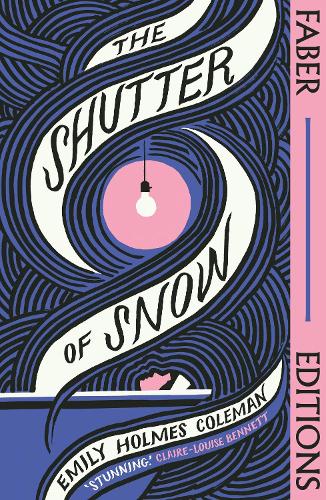
The Shutter of Snow (Faber Editions): 'Extraordinary.' Lucy Ellmann
(Paperback, Main)
Publishing Details
The Shutter of Snow (Faber Editions): 'Extraordinary.' Lucy Ellmann
By (Author) Emily Holmes Coleman
Introduction by Claire-Louise Bennett
Faber & Faber
Faber & Faber
18th April 2023
2nd February 2023
Main
United Kingdom
Classifications
General
Fiction
Literary studies: fiction, novelists and prose writers
Family life fiction / Stories about family
Biographical fiction / autobiographical fiction
813.52
Physical Properties
Paperback
192
Width 130mm, Height 200mm, Spine 8mm
170g
Description
'Extraordinary. A fascinating and unexpected delight. Coleman shows howwomen might write if we were free - and how murderous we'd be.' Lucy Ellmann
'Haunting and evocative, this is a timeless portrayal of madness, capturing theterror and loneliness of being untethered from reality.' Catherine Cho
The only thing to do is to put hammers in the porridge and when thereare enough hammers we shall break down the windows and all of us shalldance in the snow.
Some days, Marthe Gail believes she is God; others, Jesus Christ. Her baby,she thinks, is dead. The red light is shining. There are bars on the window.And the voices keep talking.
Time blurs; snow falls. The doctors say it is a breakdown; that this isGorestown State Hospital. Her fellow patients become friends and enemies,moving between the Day Room and Dining Hall, East Hall and West Side,avoiding the Strong Room. Her husband visits and shows her a lock of herbaby's hair, but she doesn't remember, yet - until she can make it upstairs, ascendingtowards release ...
Shocking and hilarious, tragic and visceral, this experimental portrait ofmotherhood and mental illness written in 1930 - just before Woolf's TheWaves and 33 years before Plath's The Bell Jar - has never felt more visionary.
Author Bio
Emily Holmes Coleman was born in California in 1899.Following graduation from Wellesley College in 1920 shemarried psychologist Loyd Ring Coleman. After the birth ofher son John in 1924, she contracted puerperal fever andpost-partum psychosis, and spent two months in a mentalhospital, inspiring her only published novel, The Shutter ofSnow (1930). In 1926 the family arrived in Paris where shebecame society editor for the Tribune and began writing articles,stories and poems, as well as working as a secretaryto anarchist Emma Goldman. She first met Djuna Barnes inthe expat literary circles of Les Deux Magots.
